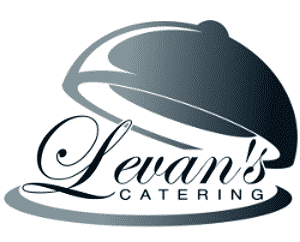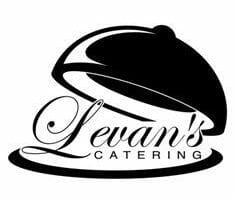Art is all about appreciating beauty. It deals with feeding the spirit, sending a message that there’s more to human life than just surviving physically. People obtain meaning from honing specific traits that accurately reflect the inherent dignity of man. In this way, ethics is viewed as art, although other art forms exist that differ from those deemed ethical. Given that, certain actions performed by man must be consistent with ethical standards imposed by his innate decency.
These same ethical standards are what should be consulted when choosing words to use in wedding invitations. Words should be selected, used and established properly in wedding invitations. Why? Wedding invites symbolize the great celebration that is up ahead. Everything must be perfect, and that includes the wedding invitations. The words used in the invitations have to be just the right ones so that people reading them are not confused.
Writing And Assembling Wedding Invitations The Right Way
Abuse, misuse or poor selection of words could lead to misinterpretations, confusion or misunderstanding between as well as among guests. It’s important to clearly establish wedding invitation wording to avoid misconceptions. Some words convey several different meanings depending on their sentence usage.
A properly worded wedding invitation accurately describes such details as the date, time, and place of the ceremony. Such info should be clearly specified as there are guests who automatically assume that if they’re invited, they’re being asked to attend everything – the wedding rites and the reception. However, some weddings have couples inviting people only for the celebratory reception. Couples here wish to make the “I do” ceremony really private, with only immediate family present and the rest of the guests asked to show up at the reception. Avoid the confusion by clearly indicating the invitation’s purpose inside the invitation.
Then again, wedding invitate wordings can also differ depending on certain conditions the couple cannot control. Take for example the concept of who sprung for the wedding. Here, it is best to opt for words that recognize and respect the party that paid while still conforming with wedding ethical standards so the other party is not offended. If say, the groom’s folks shouldered the wedding expenses, the wordings on the invitation should indicate that it is the groom’s parents that are requesting the guests’ attendance.
Consider too the wedding setting when wording the invitation. For informal weddings happening at home, replace the typical formal invitation words with more casual ones while still keeping it respectful. If kids are coming to the wedding, it would be a nice touch to write their names individually atop the addressed envelopes, or simply scribble “and family.” Example: “Mr and Mrs James Dempsey, Kevin and Penelope” or “Mr and Mrs James Dempsey and Family.” For children over 16, you could send them separate invitations, treating them like adults.
For those who prefer not having kids at the service, simply avoid writing “and family” or the youngsters’ names outside the envelope. Even better: write something like: “Adults only,” “Sorry, kids are not invited” somewhere obvious on the invite. If children are not invited to the service, but you want them at the reception, you could indicate this on the response cards or the invite itself on the underside. Some couples want people attending the function but not the service or vice versa. In this case, you might need to have two sets of invitations printed – one with reception info and another without.
When inviting a single guest, it is considered polite to add “and Guest” on the outer surface of the envelope so they have the option of bringing company along. Example: “Mr Blake Johnson and Guest.” or “Ms Jasmine Myer and Guest.”
Be ready. Oftentimes, seven to 10 percent of guests that say yes to attending the event do not actually show up. Some 20 to 30 percent never attend the function. Crafting a budget for a wedding sit-down dinner can prove difficult because of this. Sometimes doing a buffet-type dinner makes the most sense.
Should you not receive an answer from guests by the reply date, phone them. You need to find out how many will attend so funds can be budgeted accordingly. When ordering invitations, make sure to do it at least a month to six weeks before their planned mailing date. If mailing invitations around April 15, order them between March 1 and 15.
Double- or triple-check everything before printing – response cards, invitations, wedding programs, envelopes, etc. This is regardless whether you are doing it all yourself or having professionals print them. Spelling errors happen a lot so be sure to check for any. Keep your eyes peeled for misspelled words or other typos that could be on the invites. With so many other stuff going in in the wedding preparations, it’s easy to lose sight of the small details. Try not to get lost and pay attention to the finer points of wedding invitation making.
Always order extra invitation and spare response card envelopes. Some issues are bound to come up when addressing invites and it helps to have spare ones handy. The invitations should be mailed at least six weeks prior to the big day. Stress the importance of receiving a reply at least three weeks before the wedding date.
If the wedding is happening June 1, mail the invitations by April 15 and request a reply by May 7. This is enough time for guests to receive their invites and respond by mail so you in turn get an idea about finalizing catering plans, seating arrangements and more. If the wedding is taking place outdoors like in a garden or beach, make sure guests are aware of it so they can adjust their wardrobe accordingly.
Bottom line: wordings for wedding invites can take many forms, and there is nothing wrong with that. It is okay, provided the invitation wording conforms to society’s ethical standards and takes inspiration from man’s inherent dignity. The wedding details must be clearly outlined, otherwise, you defeat the purpose of having wedding invitations.
Below is a bit of wording etiquette 101 for those having a hard time understanding the rules. Pay close attention and try to understand carefully each item.
- Announcement – Couples can announce the engagement to both families via an intimate get-together. However, legally, engaged couples are required to post the union in an advert as nuptials public announcement. It is okay to not be wordy with this one. Details should include the couple’s and their folks’ names, the wedding date and venue, plus the reception info. Fancy announcements can run full-page stories on the history of the couple, although elite society
members usually do the wedding etiquette wording for this one.
With a growing number of people getting divorced, wedding etiquette wording has changed to integrate such modifications. If all parents involved are divorced, invites should include all the names of the parents, with the folks of the bride coming first. Mothers’ names should come before those of their exes. Wedding etiquette wording says that invitations should contain: the couple’s name, their folks, wedding venue and date, attire specifics, maps to the reception and wedding sites, bridal registry info and other particulars like the couple’s wedding website.
Wedding etiquette wording dictates that all wedding invites come from the side of the bride, including those for the groom’s friends. Invites should be distributed some six weeks prior to D-day. Out-of-town guests should have their invitations in their hands way sooner than the others to allow for more time to prepare for the occasion.
- Thank you cards – One week following the wedding, it is standard practice to distribute thank you cards to guests, people who gave gifts, and those who put together the event (the band, florists, wedding planner, etc.). Keep it simple. Scribble thank you notes or include a poem and have the newlyweds sign the card.
This wedding etiquette wording assignment is usually left to the family of the bride. Regular white cards are used for this. Whether couples print personalized messages or use standard cards, the wording must always be nice, memorable and sincere.
Here are the DON’Ts in wording wedding invites:
- Don’t abbreviate – Only “Dr.,” “Mr.” and “Mrs.” are acceptable. All other kinds of titles must be spelled out.
- Don’t replace the word “and” with “&.” Doing so is just plain tacky.
- Don’t utilize nicknames – Stick with first, middle and last names. Some individuals prefer their middle names not to be indicated in invites. In this situation, avoid using initials and just exclude the middle names altogether.
- Don’t abbreviate addresses, times and dates.
On wedding invitations assembly, here are a few pointers that are worth remembering:
- Slide the invite inside the big envelope together with protective tissue, seeing to it that the invitation faces you.
- Next to go in is the reception invitation. Place it over the invite, still facing you.
- Put in the response card. It has to lean within the response envelope’s flap that’s facing downward.
- The map or directions that will guide guests are the last to be inserted.
- Use calligraphy when addressing the outside of the envelope as it is more artistic and elegant looking.
- For a personal touch, use postage stamps that compliment the overall look of the invitation.
- When possible, bring invites to the post office and request for hand cancellation. This is to avoid having unsightly scratches or marks that machine-cancelling can create.
Keep all these suggestions in mind when preparing wedding invitations and you’re sure to keep mistakes at a minimum. Part of sound wedding planning is making sure the wedding invitations are well-written, have zero errors and are crafted with sophistication and elegance. This is possible with the help of the tips and pointers found in this article. Have fun conducting the preparations for the wedding.
Until Next Time,
DUANE HUTSON
Levan’s Catering and Special Events


